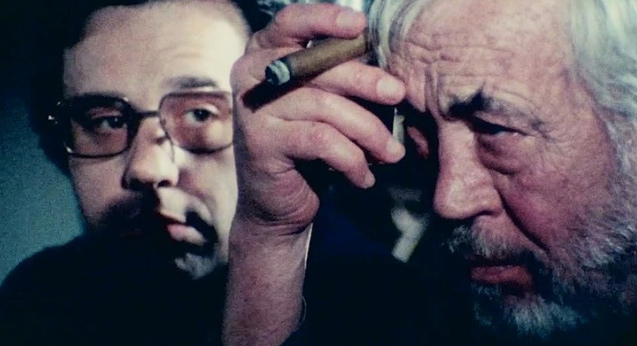Orson Welles’ incomplete lost film is dizzying, audacious, and now on Netflix

Orson Welles’ satire of Hollywood started filming in 1970, but was never completed—until this year. Now streaming able on Netflix, Welles’ final opus stars John Huston as a director working on his comeback movie.
The result is a deeply cynical meta-movie that’s dizzying to process, says Aaron Yap, but endlessly fascinating.
It’s probably not a stretch to imagine that Orson Welles would’ve got a kick out of seeing his final, long-in-limbo picture The Other Side of the Wind released today—if only for the cinema-from-beyond-the-grave sleight-of-hand it represents. That someone other than the notoriously perfectionist Welles, namely editor Bob Murawski, has put the finishing touches on it—I’m less certain.
Assembled from 100 hours of previously locked-up footage, using Welles’ notes as a guide, the reconstruction is as unpolished and shambolic as an unfinished draft, and best approached as a sincere approximation of his vision.
The Other Side of the Wind is essentially Welles’ giant last-gasp fart at Hollywood, a deeply cynical meta-movie that both drips with the wounded desperation of a “miserable prick” and the ahead-of-its-time formal bravura that’s become a hallmark of his oeuvre.
It’s all pretty dizzying to process on first viewing, even more difficult to extricate from the incredible legend and circumstance that surrounds its existence. Nonetheless, The Other Side of the Wind is endlessly fascinating, executed with a sweaty, almost maniacal, improvisational abandon that somehow doesn’t feel tossed off. Welles juggles aspect ratios and film stock, casts real-life filmmakers alongside screen analogs (John Huston’s cigar-chomping Jake Hannaford is a barely veiled Welles), and shoots the most hilariously perfect Antonioni-aping art flick you’ll ever see. It’s a boozy, audacious, navel-gazing trip that couldn’t be made today.
For optimal viewing experience, pair it with They’ll Love Me When I’m Dead (also on Netflix), Morgan Neville’s documentary which unpacks the film’s tortured five-decade history. It’s stuffed with plum, astonishing anecdotes, not to mention priceless footage of Welles in the creative thick of his process, that some viewers may find more rewarding than the film it’s about.

















